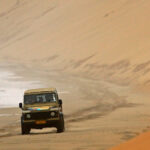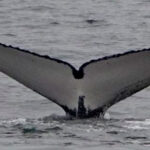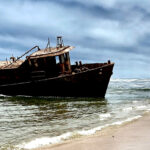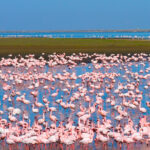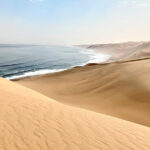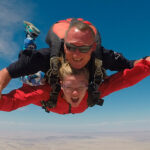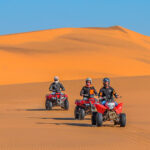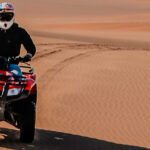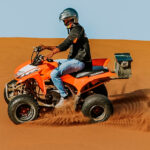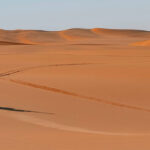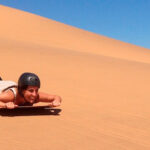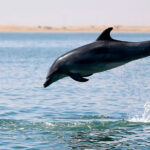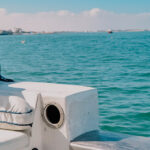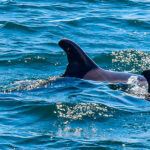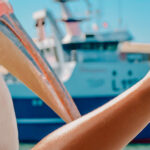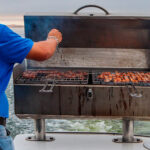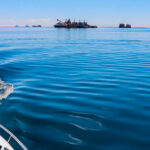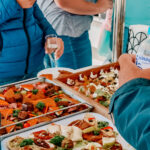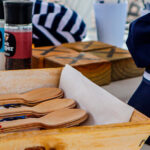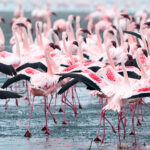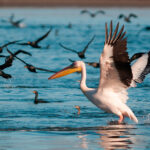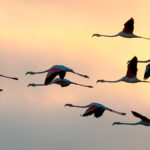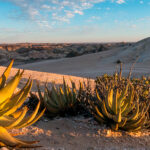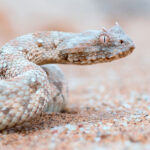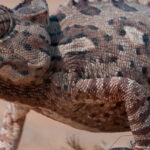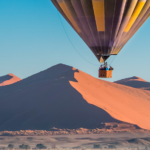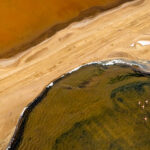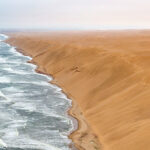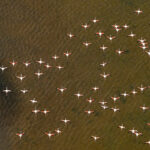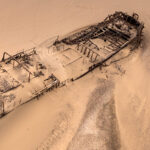
General Information
The Topnaar people (ǂAonin), a clan of the Nama people in Namibia. This half-day tour will provide an insight into the way of life of “Namibia’s forgotten people” – the Topnaar.
Topnaars began settling in the area of Walvis Bay and along the Kuiseb River during the start of the 19th century. They first occupied the area at the mouth of the Swakop River, today the city of Swakopmund, and moved south beyond Walvis Bay to the Kuiseb mouth between 1820 and 1830. The Topnaars near the sea lived from hunting game – including seals, fish and sea birds. They kept some cattle and small livestock and ate mussels, ostrich eggs and eggs from seabirds. They traded their fresh produce like fresh water, meat, goat’s milk and Nara for goods from passing ships, among them tobacco and glass bead. The beads they turned into jewellery. A small faction moved upriver to Sandfontein but was attacked and driven away by British colonial troops. They receded to Rooibank (Scheppmannsdorf during Germany’s colonial rule of South-West Africa). Today, a community of about 350 live along the lower Kuiseb River and its delta in fourteen small settlements southeast of Walvis Bay, the most important being Utuseb.
Join us on a 4 hour excursion to visit the Topnaar community in the Kuiseb river and its delta and experience the fascinating history of the Topnaars, who are often referred to as “Namibia’s forgotten people”.
Check-in at our offices at the Walvis Bay Waterfront is at 08h15 for a 08h30 departure, or at 12h15 for a 12h30 departure.
We proceed on a 40 minute drive south east to Rooibank, where our first stop is Scheppmannskirche – the church in the desert. In 1845 the Rhenish missionary Heinrich Scheppmann founded a mission station, which was named Scheppmansdorf in his honour, and built the first church nearby. Measuring only 8 by 4 meters, this tiny building constructed from reed and wood was built in only four days and inaugurated on 28 June 1846.
A small Church bell from Cape Town was fitted into a huge Ana tree close by. On 13 December 1846, the first Holy Communion was celebrated in the new mini-church. Attended by only seven people, it was nevertheless the beginning of the parish of Walvis Bay. In 1895 the old church had decayed so much that a new church had to be built. Today, the church has been renovated with bricks and cement and is used occasionally for weddings.
We briefly stop over at a monument that was built in honour of missionary Scheppman nearby. The original monument was washed away, but in 1971 was replaced by a new monument, which can be seen under the huge palm trees. The name Scheppmannsdorf, however, didn’t stick, and the settlement was renamed Rooibank.
As evidenced by special praise songs that extol its virtue, the !Nara melon has a long association with and is central to the culture of the Topnaar people. Fossilised plant roots suggest the iconic leafless !Nara plant that produce prickly melons with juicy flesh and precious pips is likely as old as the Namib dunes itself. Archaeologists identified seed coat fragments that dates human consumption of !Nara products to approximately 8,000 years ago. Evidence that local communities used pots in the processing of !Nara fruits suggests that the cooking of the fruits is a much more recent innovation. This practice is approximately 800 years old.
It is thus not surprising then that the !Nara plant is truly and deeply engrained into Topnaar culture and cuisine. We therefore do a short walk to experience a demonstration of how !Nara melons have traditionally been processed, during which we can also taste the flesh and pips.
Guests are also invited to take part in the processing of the !Nara melons. We also hear more details about the traditional way of life of the Topnaar people.
From here we proceed to a look-out point on top of a small dune to take in the expansive vistas of the area. Here we serve a selection of oysters and snacks with sparkling wine, beers and cooldrinks.
Our excursion continues eastward along the Kuiseb river. Within the Kuiseb Delta and river a low number of plant species occur which are adapted to very dry conditions. Apart from the !Nara, the vegetation includes Salsola shrubs in the west, dune grass, the dune succulent shrub, riparian vegetation of camelthorn, anaboom, wild ebony and tamarisk trees in the Kuiseb, and reeds. A diversity of lichens is found on some of the trees and on the stones of the gravel plains. Mammals include jackals, a few springbok, and domestic dogs, goats and donkeys.
On the way back to Walvis Bay, we pass Armstraat with some of the current settlements where the Topnaar community now lives. We arrive back at the Walvis Bay Waterfront at about 12h00 for the morning excursion, and at about 16h00 for the afternoon excursion.


PLEASE NOTE:
- For this activity all age groups are allowed.
- Discount price applies to children between 4-12 years , under 3 years are free (ID proof required)
- Read carefully the Inclusions/Exclusions, Arrangements and Requirements box.
Price:
$144.00/ per person
$106.00/ per child
Attraction

General Information The Topnaar people (ǂAonin), a clan of the Nama people in Namibia. This half-day tour will provide an insight into the way of life of “Namibia’s forgotten people” – the Topnaar. Topnaars began...
VIEW MORE
